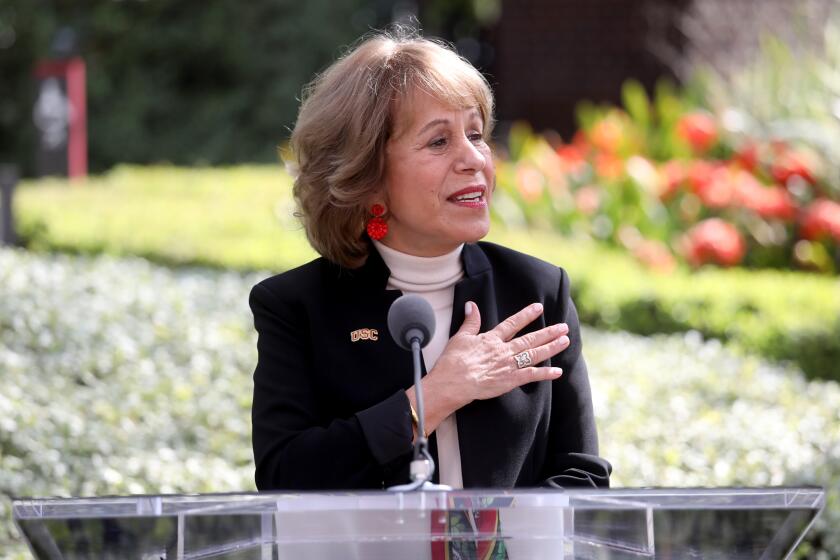Class-Size Reduction Program Nears Goal
The Los Angeles Unified School District is within a few weeks of shrinking class sizes for 187,000 students in grades 1, 2 and 3, administrators said Monday.
With that hurdle cleared at all but the most crowded campuses, schools with enough free space may now reduce kindergarten classes to the state goal of 20 students to one teacher.
“In this one, we actually went ahead of the curve in the state,” said Board of Education member Jeff Horton. “I do think we did a great job on this.”
Since Gov. Pete Wilson created the statewide class-size reduction program 1 1/2 years ago, the L.A. district--the state’s largest--was expected to be a straggler. In fact, it has implemented the program more quickly than many smaller districts. However, its speed has required a number of sacrifices, including a substantial contribution of the district’s own funds and a significant drop in teacher experience levels.
Last fall, even schools with room to reduce kindergarten class size were ordered by the board to instead use team teaching to keep new hiring of teachers focused on the third grade.
Although the board had agreed to lift the ban on lowering kindergarten class sizes once third grade was complete, some members Monday expressed lingering concerns that some schools lack the physical capacity.
Board member Vicki Castro pointed out that more than 100 schools are still able to achieve the 20-1 ratio in grades 1 through 3 only by placing 40 children in one classroom with two teachers.
“That is still not equity,” she said.
Wilson started the statewide class-size reduction program in summer 1996, offering districts extra money to hire new teachers and construct new buildings.
The L.A. district continues to struggle to hire enough teachers to cover each new class that is created whenever two larger ones are slimmed down.
This fall, of 2,700 new elementary teachers hired, 62% had no formal teaching permit, known as a credential.
Assistant Supt. Irene Yamahara said 5,400 current teachers are working with emergency credentials, more than double the number before the class-size reduction program began.
“About three years ago, we were moving downward, but unfortunately, with class-size reduction, we’re seeing it higher than we’d like to,” she said.
In addition, despite an increase this year in state support for class-size reduction, district expenditures for day-to-day operation of the program and for the additional classrooms needed are exceeding state reimbursement.
The district will spend nearly $178 million this year on additional teacher salaries and supplies, about $12 million more than it expects to receive from the state. It will spend about $141 million on new classrooms--most of them portable classrooms--$107 million more than it expects to receive from the state. The difference is being funded through Proposition BB, the school repair bond measure that district voters approved last year.
Some schools are still awaiting delivery of portable classrooms, including 400 of a new playground space-saving design: two-story portables that have yet to receive the state architect’s approval.
While schools wait for their portable classrooms to arrive or promised construction to be completed, dozens have turned their libraries, auditoriums, science laboratories and other educational spaces into temporary classrooms.
In other action, the board agreed:
* To a joint powers agreement with three cities--Huntington Park, South Gate and Monterey Park--to have police helicopters patrol Southeast Los Angeles campuses at night and respond to burglar alarms and other calls. The service will cost $11,750 annually.
More to Read
Start your day right
Sign up for Essential California for news, features and recommendations from the L.A. Times and beyond in your inbox six days a week.
You may occasionally receive promotional content from the Los Angeles Times.






